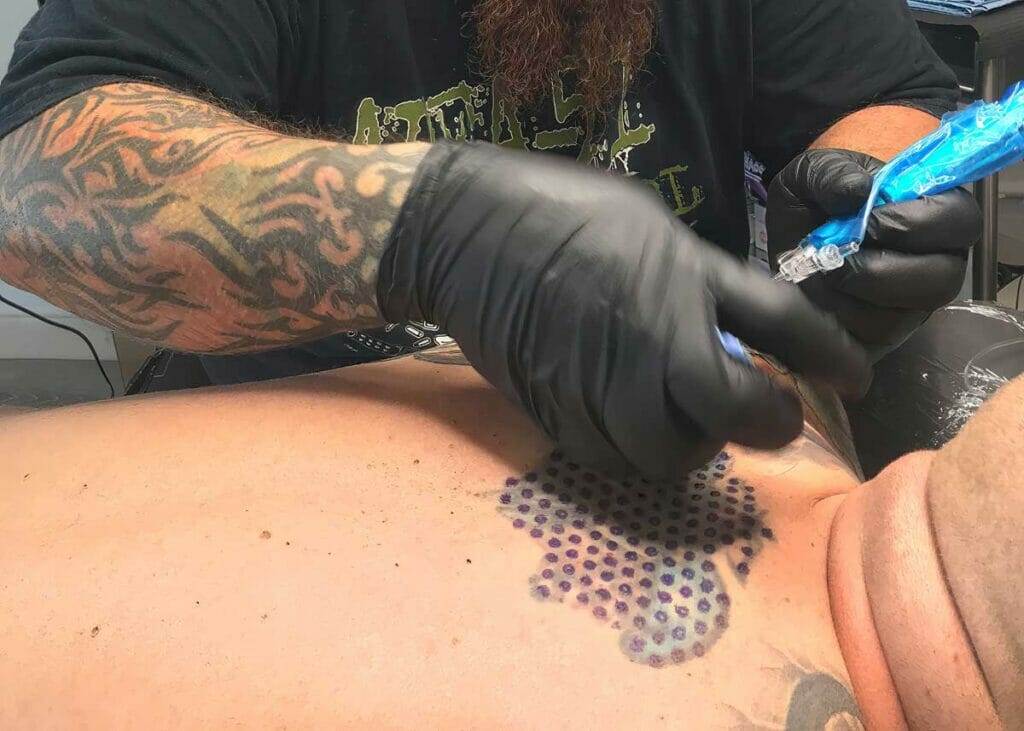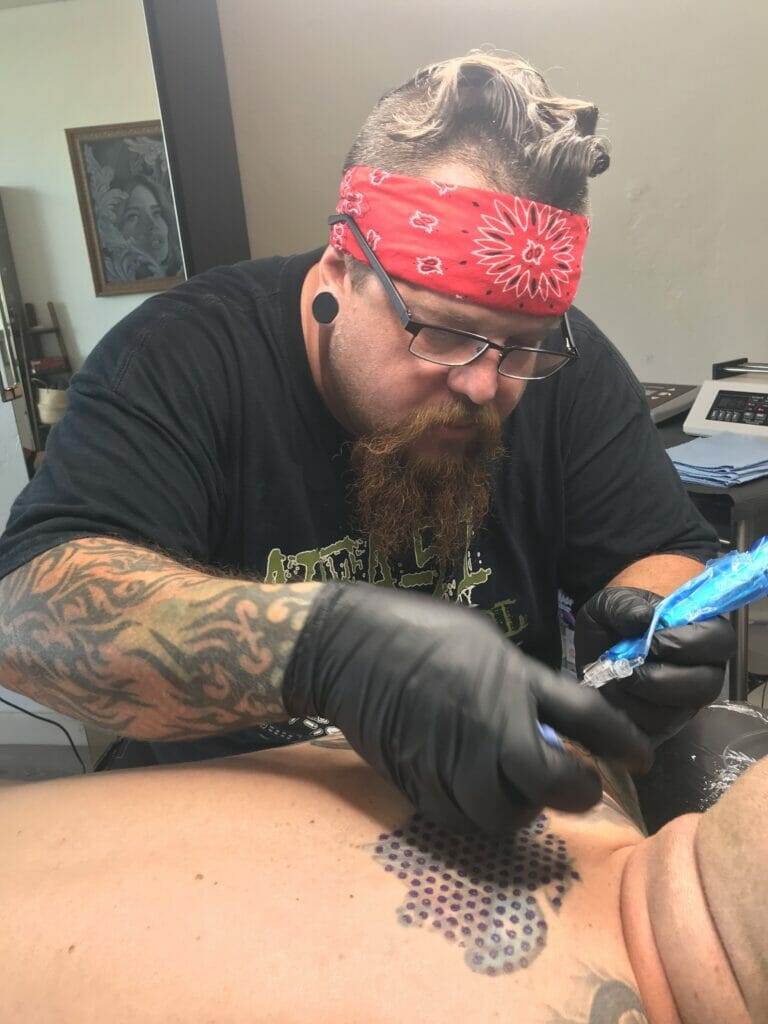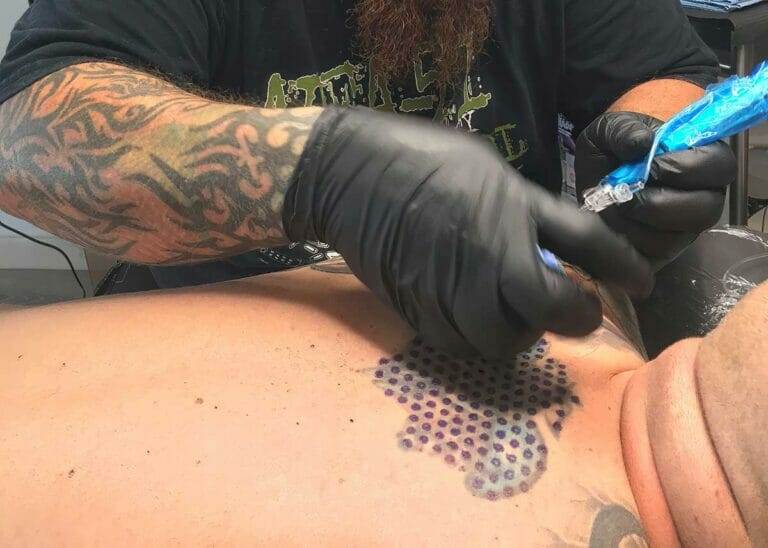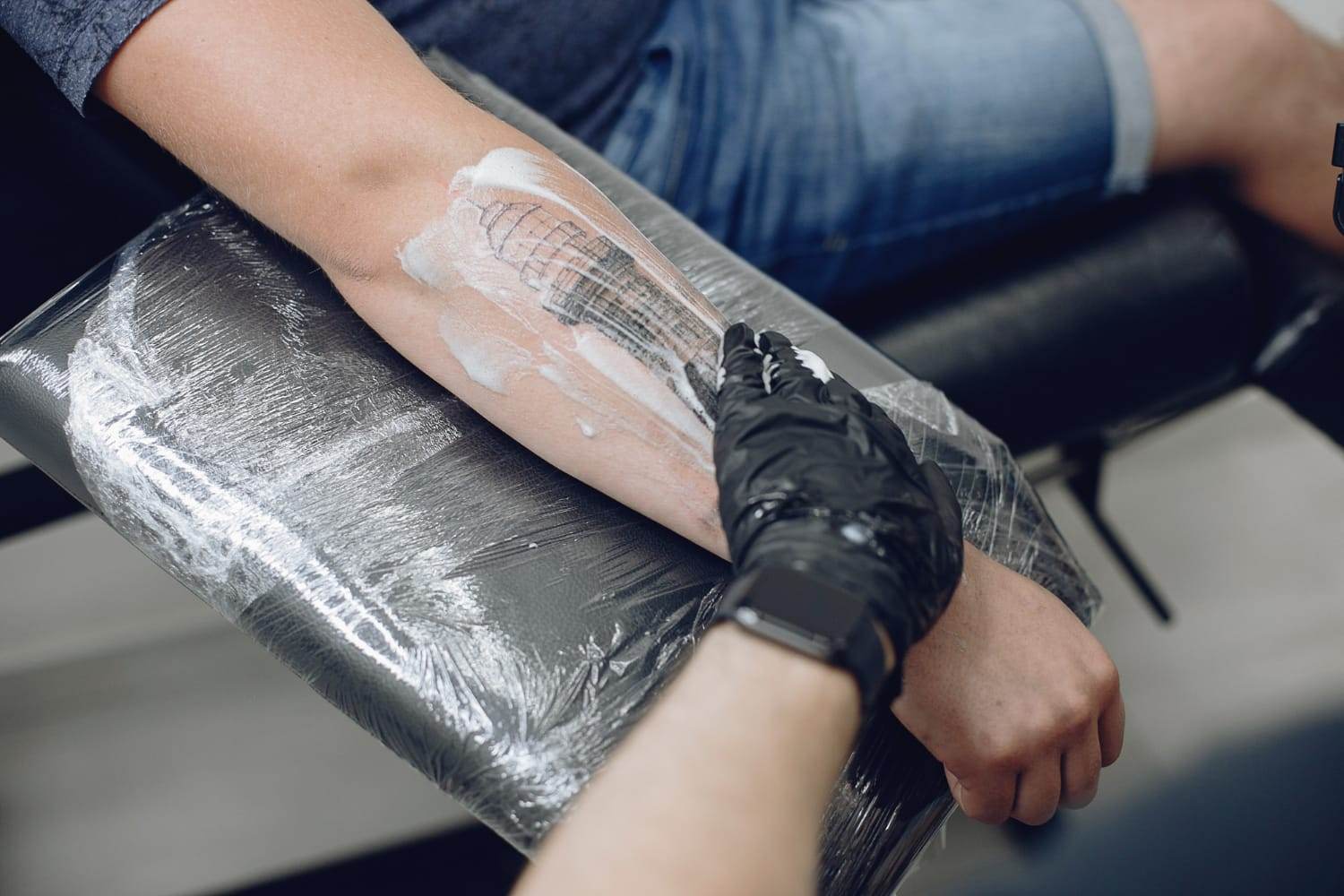In recent years, there has been a growing demand for non-laser tattoo removal options. While laser tattoo removal has been the go-to method for many people looking to remove unwanted tattoos, it has its limitations. Laser tattoo removal can be expensive, time-consuming, and may not be suitable for all skin types or tattoo colors. As a result, alternative methods have emerged to meet the needs of those seeking tattoo removal.

Chemical Tattoo Removal: An Overview of the Process
Chemical tattoo removal is one such alternative method that has gained popularity in recent years. This method involves the use of chemicals to break down the ink pigments in the skin, allowing them to be naturally eliminated by the body. The types of chemicals used can vary, but common options include trichloroacetic acid (TCA), glycolic acid, and saline solution.
The process of chemical tattoo removal typically involves applying the chemical solution to the tattooed area and allowing it to penetrate the skin. Over time, the chemicals work to break down the ink pigments, causing them to fade and eventually disappear. This process can take several sessions depending on the size and color of the tattoo.
While chemical tattoo removal can be an effective method for removing tattoos, it does come with some risks. The chemicals used can cause skin irritation, redness, and even scarring if not used properly. It is important to consult with a professional who is experienced in chemical tattoo removal to ensure safe and effective results.
Dermabrasion: A Physical Approach to Tattoo Removal
Dermabrasion is another non-laser method that is commonly used for tattoo removal. This technique involves using a high-speed rotating brush or diamond wheel to physically abrade the top layers of skin where the tattoo is located. As the skin heals, new skin cells replace the abraded ones, gradually fading the tattoo.
The process of dermabrasion for tattoo removal can be quite intense and may require multiple sessions to achieve the desired results. It can also be painful and may cause temporary redness, swelling, and scabbing. However, dermabrasion is generally considered to be a safe and effective method for tattoo removal, especially for smaller tattoos or those located on less sensitive areas of the body.
Saline Tattoo Removal: A Natural Alternative to Laser Removal
Saline tattoo removal is a natural alternative to laser removal that involves the use of a saline solution to fade tattoos. This method works by injecting the saline solution into the skin, causing the ink pigments to rise to the surface and eventually be expelled by the body’s natural healing process.
The benefits of saline tattoo removal include its non-invasive nature and minimal risk of scarring or skin damage. It is also suitable for all skin types and tattoo colors. However, it is important to note that saline tattoo removal may require multiple sessions to achieve desired results, and it can be more expensive than other non-laser methods.
Cryosurgery: Freezing Away Unwanted Tattoos
Cryosurgery is a non-laser tattoo removal method that involves freezing the tattooed area with liquid nitrogen or another freezing agent. This freezing process causes the ink pigments to break apart, allowing them to be naturally eliminated by the body over time.
Cryosurgery is generally considered to be a safe and effective method for tattoo removal. It is less painful than laser removal and does not typically cause scarring or skin damage. However, it may require multiple sessions to achieve desired results, and there is a risk of hypopigmentation or hyperpigmentation in some cases.
Microdermabrasion: A Less Invasive Option for Tattoo Removal
Microdermabrasion is a less invasive option for tattoo removal that involves using a handheld device to exfoliate the top layers of skin where the tattoo is located. This process helps to fade the tattoo over time by stimulating cell turnover and promoting the growth of new, healthy skin cells.
The benefits of microdermabrasion for tattoo removal include its non-invasive nature, minimal risk of scarring or skin damage, and relatively short recovery time. However, it may require multiple sessions to achieve desired results, and it may not be as effective for larger or more deeply pigmented tattoos.
TCA Peel: A Chemical Peel for Tattoo Removal
TCA peel is a chemical peel that can be used for tattoo removal. This method involves applying a solution containing trichloroacetic acid (TCA) to the tattooed area, causing the top layers of skin to peel off and fade the tattoo over time.
TCA peel is generally considered to be a safe and effective method for tattoo removal. It can be used on all skin types and tattoo colors, and it does not typically cause scarring or skin damage. However, it may require multiple sessions to achieve desired results, and there is a risk of skin irritation or redness during the healing process.
Glycolic Acid: A Mild Acid for Fading Tattoos
Glycolic acid is a mild acid that can be used for tattoo removal. This method involves applying a solution containing glycolic acid to the tattooed area, causing the ink pigments to break down and fade over time.
The benefits of glycolic acid for tattoo removal include its mild nature, minimal risk of scarring or skin damage, and relatively short recovery time. It can be used on all skin types and tattoo colors. However, it may require multiple sessions to achieve desired results, and it may not be as effective for larger or more deeply pigmented tattoos.
Tattoo Removal Creams: Do They Really Work?
Tattoo removal creams are another non-laser option for removing unwanted tattoos. These creams typically contain ingredients that help to break down the ink pigments in the skin, allowing them to be naturally eliminated over time.
The effectiveness of tattoo removal creams can vary depending on the brand and the individual’s skin type and tattoo color. Some people may see significant fading with regular use, while others may not see much of a difference. It is important to note that tattoo removal creams are not regulated by the FDA and may not be as effective as other non-laser methods.
Combination Approaches: Maximizing Results with a Multi-Method Approach
For those seeking maximum results, combining different tattoo removal methods can be a viable option. By using a combination of methods, such as chemical tattoo removal, dermabrasion, and saline tattoo removal, individuals can target different layers of the skin and increase the chances of complete tattoo removal.
When choosing a combination approach, it is important to consult with a professional who can assess your specific needs and recommend the best combination of methods for your situation. It is also important to consider the risks and benefits of each method and weigh them against your desired results.

Weighing the Pros and Cons of Non-Laser Tattoo Removal Options
In conclusion, there are several non-laser tattoo removal options available for those looking to remove unwanted tattoos. Each method has its own set of benefits and drawbacks, and it is important to consider these factors when choosing the best method for your needs.
Chemical tattoo removal, dermabrasion, saline tattoo removal, cryosurgery, microdermabrasion, TCA peel, glycolic acid, and tattoo removal creams all offer unique approaches to fading or removing tattoos. By understanding how each method works and considering factors such as cost, recovery time, and potential risks, individuals can make an informed decision about which method is right for them.
Ultimately, the decision to remove a tattoo is a personal one, and it is important to take the time to research and explore all available options before making a decision. Whether you choose laser removal or one of the many non-laser methods discussed in this article, the most important thing is to choose a method that you feel comfortable with and that will help you achieve your desired results.








Thank you for sharing this in-depth look at non-laser tattoo removal options! As an aesthetician, it’s great to see more people becoming aware of alternatives that suit different skin types and sensitivities. I especially appreciate the mention of saline removal—it’s something I often recommend for clients wanting a gentler, natural option.